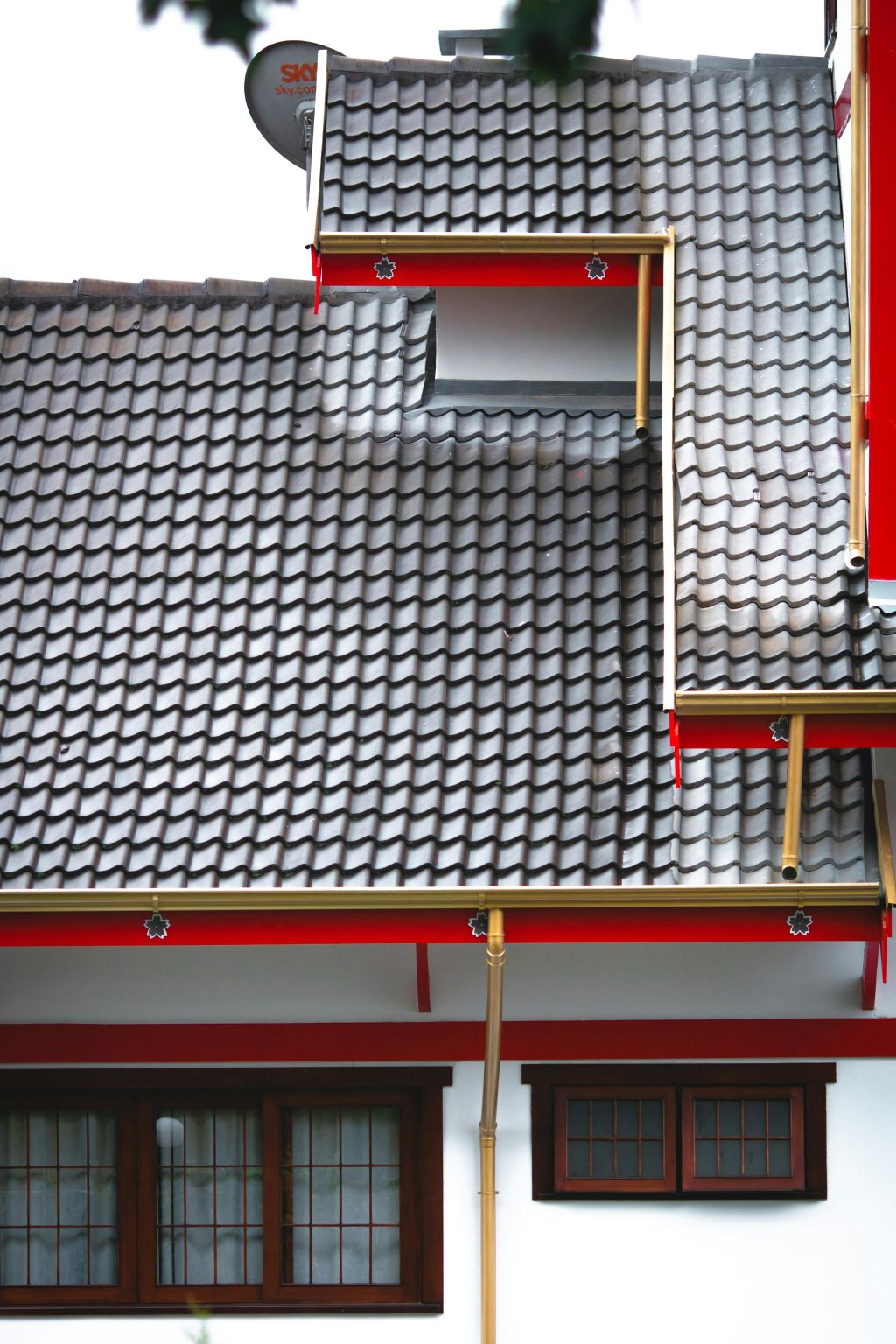Most homeowners barely give their gutters a second thought until something goes dramatically wrong. I’ll admit, I was one of them. But after watching my neighbour deal with a £15,000 foundation repair bill that could’ve been prevented with proper gutter maintenance, I’ve become something of a convert to the “prevention is better than cure” philosophy.
Here’s the thing that shocked me most: your gutters & your foundation are more connected than most people realise. It’s not just about keeping rainwater from splashing on your windows or creating muddy puddles by your front door. We’re talking about a domino effect that can literally undermine your entire house.
The maths is pretty sobering when you consider that gutter cleaning typically costs between £100-£300 annually, whilst foundation repairs can easily run into tens of thousands of pounds. Yet somehow, many of us (myself included, until recently) treat gutter maintenance as an optional extra rather than essential home care.
The Hidden Connection Between Your Roofline & Foundation
Water doesn’t care about your mortgage payments or your weekend plans. It follows the path of least resistance, and when gutters become clogged, that path often leads directly to your foundation.
Think about it this way: your roof collects rainwater from a surprisingly large surface area. A typical three-bedroom house might have a roof area of 100-150 square metres. During a moderate rainfall of just 10mm (which happens quite regularly in the UK), that roof is channelling roughly 1,000-1,500 litres of water into your gutter system.
When gutters function properly, this water gets directed away from your house through downpipes & into drainage systems or soakaways. But when they’re blocked with leaves, moss, tennis balls (don’t ask), or debris, that water has to go somewhere else.
Unfortunately, “somewhere else” usually means cascading down the side of your house, pooling around your foundation, or worse — backing up under roof tiles & finding creative ways into your home’s structure.
How Water Transforms From Helper to Home Wrecker
Water is incredibly persistent. I’ve seen it find the tiniest cracks & exploit them until they become major structural issues. When gutters overflow, several things happen simultaneously, none of them good for your foundation.
First, there’s the immediate impact of water pooling around your foundation walls. Clay soil (which we have plenty of in the UK) expands when wet & contracts when dry. This constant expansion & contraction creates pressure against foundation walls that they weren’t designed to handle continuously.
But it gets worse. That pooled water doesn’t just sit there looking innocent. It gradually seeps into any tiny cracks or gaps in your foundation. During winter, this water can freeze, and frozen water expands with tremendous force — enough to widen cracks significantly.
I remember my neighbour describing the sound of his foundation wall cracking during a particularly harsh winter. He said it was like a gunshot in the middle of the night. Terrifying stuff, really.
The Soil Situation Gets Complicated
Here’s something I never considered before my education in foundation disasters: different soil types react differently to excess water, and most of these reactions spell trouble for your house’s stability.
Clay soil, which is common across much of England, becomes almost plastic when saturated. It can shift, slide, and move in ways that put enormous pressure on foundation walls. I’ve seen houses where one corner has literally sunk several inches because the clay beneath became waterlogged & unstable.
Sandy soil presents different challenges. While it drains better than clay, excessive water can wash away the soil that supports your foundation, creating voids or “undermining” the structure. It’s like pulling the rug out from under your house, except the rug is the ground itself.
Even chalk or limestone soils, which generally drain well, can develop issues. Water can dissolve chalk over time, creating cavities or sinkholes that compromise foundation support.
Basement & Crawl Space Disasters
If you have a basement or crawl space, clogged gutters become an even more serious concern. These below-ground areas are particularly vulnerable to water infiltration, and the consequences can be both immediate & long-lasting.
Basement flooding from poor gutter drainage isn’t just about ruining stored Christmas decorations or that exercise bike you never use. Standing water in basements creates perfect conditions for mould growth, which can become a serious health hazard & significantly impact your home’s value.
But perhaps more concerning is what happens to the structural elements in these spaces. Wooden floor joists & supports can rot when exposed to persistent moisture. Steel supports can rust & weaken. I’ve seen cases where homeowners discovered their floor joists had rotted to such an extent that their ground floor was essentially being held up by habit & good intentions.
The moisture also affects foundation walls from the inside, creating hydrostatic pressure that can cause walls to bow inward or develop serious cracks. Once this process starts, it accelerates quickly.
Warning Signs That Should Make You Nervous
Some foundation problems announce themselves dramatically, but many develop quietly over months or years. Learning to spot the early warning signs can save you thousands of pounds & significant structural headaches.
Cracks in foundation walls are obviously concerning, but not all cracks are created equal. Hairline cracks that run vertically might just be settling, whilst horizontal cracks or cracks wider than a £1 coin typically indicate more serious pressure issues.
Inside your house, look for doors that suddenly don’t close properly, windows that stick, or new cracks appearing in walls, particularly where walls meet ceilings. These can indicate that your foundation is shifting or settling unevenly.
Water stains or dampness in basements, especially after heavy rainfall, often indicate that water is finding ways through your foundation. Even if the amount seems small, it suggests that your foundation’s waterproofing is compromised.
Also pay attention to changes in your floors. Floors that feel bouncy, squeak in new places, or show gaps between floorboards might indicate that the underlying structure is shifting due to foundation movement.
The True Cost of Foundation Repairs
Foundation repair costs can vary dramatically depending on the extent of damage & the specific solutions required, but they’re never cheap. Basic crack injection might cost £500-£1,500 per crack, whilst more extensive repairs involving underpinning or foundation replacement can easily exceed £20,000-£50,000.
I know someone who needed to have their entire foundation underpinned after years of gutter neglect led to serious settlement issues. The final bill was over £35,000, and that didn’t include the cost of repairing interior damage caused by the foundation movement.
But the financial cost is just part of the story. Foundation repairs are disruptive in ways that are hard to quantify. Many repairs require excavation around your house, which means saying goodbye to landscaping, driveways, or patios. Some repairs require temporary relocation whilst work is completed.
There’s also the impact on your home’s value & insurability. A house with a history of foundation problems can be difficult to sell, and insurance companies may charge higher premiums or exclude certain types of coverage.
Prevention Strategies That Actually Work
The good news is that preventing gutter-related foundation damage is relatively straightforward & much more affordable than dealing with the consequences.
Regular gutter cleaning is obviously crucial, but it’s more nuanced than just clearing leaves twice a year. Gutters should be inspected & cleaned at least quarterly, with additional checks after major storms. I’ve learned to look for sagging sections, loose brackets, & signs that gutters aren’t draining properly.
Proper downpipe management is equally important. Downpipes should direct water at least 2-3 metres away from your foundation, and the discharge area should slope away from your house. I’ve seen too many houses where downpipes dump water right next to the foundation wall — it’s like creating your own mini flood zone.
Gutter guards or leaf protection systems can reduce maintenance frequency, but they’re not a complete solution. Even the best gutter guards require periodic cleaning & inspection.
It’s a chain reaction many homeowners don’t see until it’s too late. Protecting your foundation starts with your roofline. If you’re at all unsure about the state of your gutters, getting an assessment from a professional gutter cleaning company is a wise move. A friend of mine learned this the hard way and now recommends them to everyone.
Final Thoughts
The relationship between gutters & foundations might not be obvious, but it’s undeniably real. After seeing firsthand how gutter neglect can lead to catastrophic foundation problems, I’ve become almost evangelical about proper gutter maintenance.
The irony is that gutters are one of the most visible & accessible parts of your home’s water management system, yet they’re often the most neglected. Perhaps it’s because the consequences of neglect are hidden underground, developing slowly until they become major problems.
What strikes me most is how preventable these issues are. A few hundred pounds spent annually on gutter maintenance can prevent foundation repairs that cost tens of thousands. It’s not the most exciting way to spend money on your home, but it might be one of the most important investments you make.



